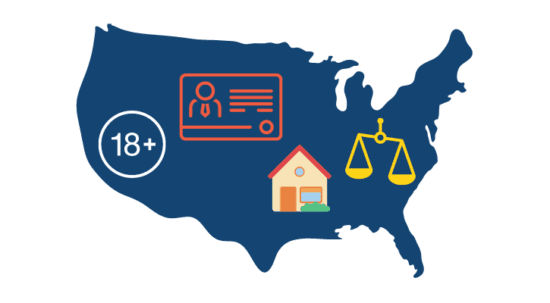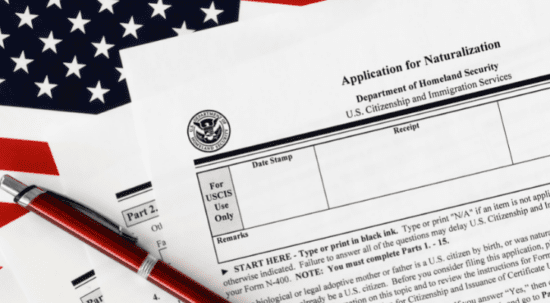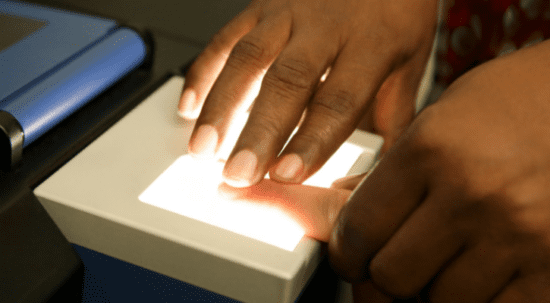What is citizenship?
Citizenship is a legal status that gives people rights and certain protections. U.S. citizens can vote, travel outside of the country freely, bring family members to the USA, and offer citizenship to their children.
Ways to become a citizen
You can become a U.S. citizen in one of the following ways:
You are a lawful permanent resident. Naturalization is the process where a Green Card holder born outside of the USA becomes a naturalized citizen.
Your parent is a naturalized citizen. Children under 18 can become a derived citizen through a parent who has gone through the naturalization process. You just need to file Form N-600 for proof of citizenship.
Your parent is a natural-born citizen. This is when a child born outside of the USA becomes a citizen through a parent who is a U.S. citizen. It is called acquisition of citizenship.
You were born in the USA. Anyone born in the U.S. is automatically a natural-born citizen.
Each of these ways of becoming a U.S. citizen offers the same citizenship rights as any of the others.
10 steps to apply for citizenship
To become a naturalized citizen, you need to apply with the U.S. Citizenship and Immigration Services (USCIS). The entire application process can take over a year depending on your location. It is helpful to learn about the different steps along the way before applying.
1. Check if you are eligible
You must meet certain requirements if you want to apply to become a naturalized U.S. citizen. In general, you will need to:
- be 18 years of age or older
- be a lawful permanent resident
- have a valid Green Card
- live in the U.S. for a certain amount of time
- have proof of living in your state
- have good moral character
- have not committed certain crimes
- speak, read, and write basic English
- know U.S. history and government
The requirements can vary based on your naturalization category. These include naturalizing as a lawful permanent resident, through marriage or military service.
| It is important to check if you qualify for an exemption. Some older adults and people with disabilities can get an exemption from the English and civics tests. You can also ask for accommodations if you have a disability. |
2. Review options for legal help
We always suggest starting any U.S. immigration process by reviewing your options for legal help. The naturalization process is complicated and you do not get your money back if your application is denied. It is especially important if you have any criminal record or think you qualify for an exemption.
Many organizations and lawyers offer free or low-cost legal services.
Citizenshipworks is a non-profit that helps people apply for citizenship. Get connected with free, live, online legal help to support your citizenship process.
3. Gather information
Read through the instructions for Form N-400. Collect the required documents so you can refer to them as you complete your application. Create a list of questions you might have to ask a legal service provider.
4. File Form N-400
You will need to complete Form N-400, Application for Naturalization. It is important to take time to understand the questions on Form N-400. You can file your application online or mail it to your local USCIS Lockbox.
You must submit all the supporting documents when you file Form N-400. Be prepared to take photos or make copies of your documents. All documents in another language must be translated into English by a certified translator.
5. Pay the application fee
When you file Form-N400, you will also need to pay the citizenship application’s filing fee. If you are filing online, you will be guided through the payment process as part of your application. If you are filing by mail, you will need to submit the payment with your application.
6. Check your application status
USCIS will mail you a receipt notice once they receive your application. You can check the status of your application online or by logging in to your USCIS account.
7. Go to biometrics appointment
You will receive a notice to go to a biometrics appointment at your local Application Support Center (ASC). You may need to give biometrics, such as your fingerprints, photograph, and signature.
USCIS uses your biometrics to check your identity and background for security information. You may need to pay an additional fee for biometric services.
8. Go to naturalization interview
Next, you will receive a notice for your naturalization interview. This is also called the citizenship test. It will take place at your local USCIS field office.
At the interview, an immigration officer will review your naturalization application. They will ask you different questions about your Form N-400 answers. They will also test you on your English language skills and knowledge of U.S. government and history.
9. Receive a decision
The immigration officer will decide to grant, deny, or continue your application. You will receive a decision in person the same day or in writing by mail.
- If your application is granted, you will be scheduled to attend a naturalization ceremony.
- If your application is continued, the officer will instruct you on how to provide more evidence.
- If your application is denied, the officer will explain how you can file an appeal or reapply for naturalization.
10. Go to naturalization ceremony
If you pass your naturalization interview, you will receive an appointment notice to go to a naturalization ceremony. There you will take the Oath of Allegiance.
You will go to a ceremony with other people who are also becoming U.S. citizens. You will have to swear your loyalty to the U.S. government as part of your oath.
You will receive a Certificate of Naturalization at the end of the naturalization ceremony. The certificate is proof that you are a naturalized U.S. citizen.
| Once you become a U.S. citizen, your children under the age of 18 are also considered citizens. You will need to file Form N-600 for their proof of citizenship. |
Remember, naturalization can be a long and complicated process. If you take time to understand the steps and prepare, you can do it! There are many benefits to being a U.S. citizen. USAHello is here to help you along the way.
Next: Learn about Form N-400
The information on this page comes from USCIS, USA.gov, and other trusted sources. We aim to offer easy to understand information that is updated regularly. This information is not legal advice.







